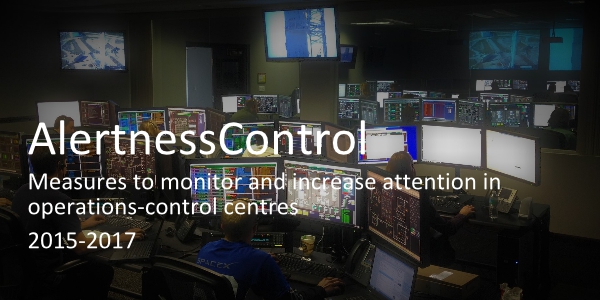AlertnessControl

Sleepiness (during the day) poses a particular risk in monitoring activities. As part of the AlertnessControl project, a system was developed that measures the current level of attention by means of well-tried tests in a few minutes and makes an individualised recommendation with regard to attention-raising measures to be carried out.
Client: bmvit, Transport Infrastructure Research VIF2014
Duration: September 2015 to February 2017 (18 months)
Project partners: TU Vienna, Railway Research Department; FH St.Pölten Forschungs GesmbH; Preventconsult
LOI partners: Deutsche Bahn AG – network control center Frankfurt/Main; Austro Control; Wiener Linien; ASFINAG
Project description: Due to shift work and a long uninterrupted working time of twelve hours, the workload for employees at the company management centres is very high. Especially in the case of deviations from regular operation, high psychological demands are placed on the personnel since automated operation has to be (partially) regulated manually, which inevitably entails risk-based action. Sleepiness (during the day) poses a particular risk in monitoring activities. The project focused on the workstation of the dispatcher control area (FDL-STB) since the dispatcher can take safety-relevant actions and hypervigilance or losses in assessment and decision performance as well as information processing can have a particularly serious effect. The aim of the AlertnessControl project was to develop measures relevant to occupational psychology, technical and if necessary, organisational measures which help to determine the current level of staff vigilance, to increase attention and if necessary, to warn.
As part of the project, a system was developed to record attention depending on operational influences. It is software that has been installed on a tablet as a prototype and rests on the workstation. At the heart of these tests are well-tried demonstrable tests (psychomotor vigilance test, Stanford drowsiness scale) with which the attention or the subjective and objective degree of sleepiness can be determined within a period of approx. four minutes. The test is set so that the time is chosen according to the scheduled or theoretical workload. However, you have the option of rejecting or ignoring the test at any time and carrying it out at a later point in time. Depending on situational attention, an individualised recommendation will be made regarding the attention-grabbing measures to be carried out, which also takes into account the workload still to come for the person.
Contact: DI Dr. Bernhard Rüger
